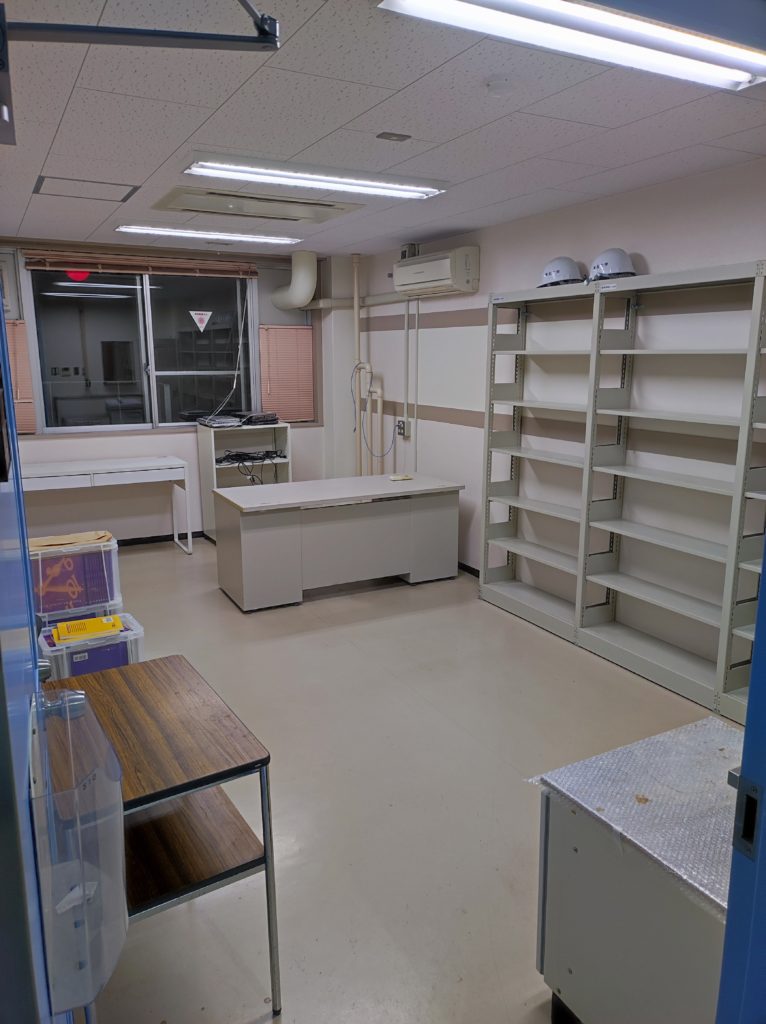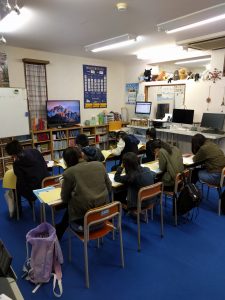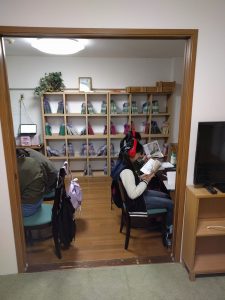A Farewell to Arms
Goodbye Tohoku University

Last night I finally moved the last few things out of my university office. They had been accumulating there for the last thirteen years, and I struggle with tidiness at the best of times, so getting everything organised and cleared out was an immense effort that has loomed over me for the last fifteen months.
I slept like a baby.
The best sleep I have had in a couple of years, I would say. Clearly finishing my job at Tohoku University was a big deal for me emotionally, financially, and health- and career-wise.
A mixed experience I am glad I had
My time at TU was very mixed. It was the best job I have ever had for a few years in terms of satisfaction, one of the easiest jobs I have ever had considering how well it paid, but at the same time one of the most frustrating and disappointing jobs I have ever had.
There were three distinct phases: the beginning, the middle, and the end.
The beginning
I started working at Tohoku University in April 2009. Prior to that I was unemployed/underemployed (doing part-time university teaching) for a year after losing my job at the prefectural board of education.
That happened quite suddenly when the Miyagi BOE decided to switch to dispatch ALTs from JET, and realised they didn’t need an ALT supervisor any more 😉
I think I applied in September 2008, had an interview in early December, and was notified I got the job at the end of the month.
At the time I had an MA in Oriental Studies (Chinese) and Social and Political Science (the free MA you get from Cambridge as a reward from not dying or going to prison in the three years after graduation). I also had a few dodgy academic publications.
My first boss and the person who hired me was excellent. A biologist who was in charge of our section of language teachers for some reason, he had a solid vision for what he wanted us to do (deliver better language classes) and gave us all the support we needed to do so.
Those first four years were the best of my working life. Together with a couple of colleagues, we were building truly exciting things (including the university extensive reading program, the readers’ corner in the library, and the PDR method of teaching communication classes).
I also got a second MA at this time, from The University of Birmingham in the UK. I thought this might be useful if I ever wanted to get a different job, or as preparation for doing a PhD (it is now extremely unlikely I will ever do a PhD).
The turning point
Then just as we thought things were coming together (we got a couple of awards from the university for our work on the English curriculum), we had our Icarus moment.
We had flown too close to the sun and were in for a crash landing.
First our boss left, to be replaced with someone with very different priorities and understanding of education. It took us a while to realise that everything was different, but our support was gone.
A senior colleague in a different department then tried to take over the reading program (seemingly just to make himself look good and with little background in or understanding of ER). When we refused he became abusive, then complained to our new boss about us.
The long slow decline
Since that point I stopped putting much energy into my job at the university. I still worked hard at my classes, and enjoyed teaching the excellent students we were lucky enough to get at Tohoku University, but gave up on trying to build university-wide systems.
I had misunderstood the nature of the institution, and neglected the political aspects of getting things done.
I applied for tenure once, but failed to get it (I was told my relative lack of publications held me back: a colleague that got tenure at the same time was told his strong teaching background made up for his complete lack of them).
One highlight was developing an elective course on personal finance: the students who joined the class went from largely financially illiterate at the start to being able to explain key aspects of personal finance by the end (all in English). That was a lot of fun and I felt I was changing lives.
The end
In March 2021 I received the following short email from my boss:

It basically says: “be aware that your contract will end on March 31st 2022, and it will not be renewed.”
That seemed a bit cold after 13 years at the university, but was pretty much par for the course at that point.
In a way I was relieved. I had been doing a lot of thinking about what I might do when my contract was up. I had half expected that permanent employment might be available in some form (we had been told this at various points since being hired), but was also thinking about moving on and trying something different.
This email basically decided it for me.
The ‘five-year rule’ for permanent employment did not apply to us, as according to the university we were ‘researchers’ and thus would not be eligible for permanent employement until 2023.
There was probably some kind of legal case there, but I didn’t feel like jumping through hoops to keep a job I didn’t really like all that much any more, and that didn’t want me.
What is next?
Well, the original plan was to take it easy for a bit, maybe claim unemployment insurance (I would be eligible for about six months’ worth, starting immediately). I will also be getting a retirement bonus of 14.4 months base salary, which is about the same as my annual take home salary including bonuses.
I’m 44 now, which puts me at the half-life point according to my estimates. Accordingly, I’ve been planning a big trip to celebrate for a few years now, traveling around the world and visiting people I care about.
Covid, and the demands of my wife’s business (she runs an English school that I help out with) have put paid to both those plans.
I’ll be helping out at the school on a full-time basis for a while, and round-the-world travel doesn’t seem very sensible right now.
So it’s not what I was expecting, but I can see some positives.
Life goes on and remains interesting.
Our Fluency Course materials for JHS students are selling well, and RetireJapan remains a source of joy in my life.
I remain very lucky.
Academy curriculum expectations extensive reading junior high school
by sendaiben
12 comments
Cambridge Academy: Another Quantum Leap
The Academy Fluency Course
JHS 1st-year class doing verb exercises
We’re into week three of the new academic year, and we’re starting to see the results of the changes I wrote about in the previous update.
You can read previous Academy posts here:
- Extensive Reading for Secondary Students (April 2015)
- Six Months In (September 2015)
- Year One (February 2016)
- Looking at Year Two (March 2016)
- Stocktake (March 2016)
- Shadoku explained (April 2016)
- Some improvements to the curriculum (April 2016)
- December 2016 update (December 2016)
- Cambridge Academy: Year Two and Three (March 2017)
- Cambridge Academy: Stocktake 2017 (March 2017)
Our new reading classroom (the second)
I have to admit I was a bit jittery before classes started on April 1st. I was nervous about the new materials for the output classes, I was nervous about teaching six nights/twelve hours a week, and I was nervous about the larger class sizes.
It’s looking like I needn’t have been 🙂
New Materials
We’ve been working on the Fluency course for about a year now. We have year one in draft form, and will be using it with the three classes (28 students) of JHS 1st years we have this year as an alpha trial.
If anything, the materials work even better than I had hoped. Students have responded extremely well, they are visibly improving already, and the classes are just fun to teach.
The course is based on the New Horizon content, but vastly expanded and designed to get the students speaking, reading, and writing fluently. The first year of the course is 15,000 words long (three times the amount in all three years of New Horizon) and students explicitly study 720 words in the 48 lessons.
Students do speaking and writing practice, speed reading, verb/pronoun exercises, and memorize and write dialogues. They are constantly working for 60 minutes. It’s a beautiful thing to see and teach.
We also use Quizlet (search for CA OUTPUT 1 to see our lessons) to preview and practice vocabulary and questions for the class, and students do Duolingo as optional language practice.
This year we will write the second year of the course, and next year we’ll have a beta of the first-year course at Cambridge and at another partner school, while we do the alpha of the second-year course at Cambridge.
Teaching Six Nights/Twelve Hours a Week
This also went way better than I had expected. I didn’t intend to teach six nights a week, but we had so many students wanting to join that we chose to add another day (Mondays), as well as increase class sizes (see below) to accommodate them.
The classes are fun, and even with the extra preparation needed for the first couple of classes, have so far not been too overwhelming. I have an assistant in each class but, to be honest, haven’t really needed them so far.
Larger Class Sizes
This might be the best thing of all. Up until this year, all our classes had a maximum of six students in. This year due to unexpected demand (we were expecting up to twenty JHS1 students: we actually got twenty-eight) we increased the class size to ten.
I was expecting it to be more difficult to teach. I was also expecting the parents to be unhappy.
The thing is, with our new fluency course, it’s easier to run the class as students need less individual attention. The atmosphere actually improved with more students in the room. In fact, I think this will work equally well (or better!) with twenty or thirty students.
Parents haven’t complained. In fact, many of them have told us their children are really enjoying the classes.
So if we can secure a larger space I will try to increase class sizes to twenty next year 🙂
Extensive Reading Rant
My first video for the iTDI Making ELT Videos course
The second week assignment for the iTDI Making ELT Videos course was to make a video. Here’s my sad attempt 🙂
It was rushed, shot on two devices, edited with Windows Movie Maker (which in my opinion is complete garbage -need better software). No music, had real trouble putting the screenshots in (hence the messed up audio from halfway through), didn’t do proper lighting, forgot to add links and a call to action…
BUT, I learned a huge amount and had fun. Looking forward to doing a better job with the second one.
curriculum expectations high school junior high school school management
by sendaiben
2 comments
Making a New JHS and SHS Curriculum
Fluency Practice and Clarity
This year we are creating a new curriculum for the Cambridge Academy output classes. I’ve written (and thought) a lot about the Academy reading program input classes, but over 90% of our students also take an output class.
Output classes are small group (up to six students) communication classes focusing mainly on speaking and writing. This year I am taking a closer look at these classes because I have noticed that they may be far more important than I realized.
I believe the reading program delivers most of the benefit to our students. Extensive reading and listening for at least an hour a week is going to complement everything else they are doing at school and outside and give them the amount of input they need to start internalizing the language. However, in our input classes students work alone reading and listening to texts. They don’t necessarily notice the progress they are making, nor do they form emotional connections with their classmates or teachers.
That’s where the output classes come in. Students do pairwork and communicate through speaking and writing. If they enjoy the output classes they will be more motivated and have a positive view of our school.
In a way, the output classes are the heart of the program.
Which is why we are trying to improve them this year. Last year the output classes were a bit of an afterthought, and did not produce the results or the atmosphere we wanted. This year we are shaking things up with some major changes.
No homework
Two things prompted this: I read some articles about how homework doesn’t do much for students and they really resonated with me, and we noticed that only about half of our students were actually doing the homework we set.
Now, I think the benefits of formal homework could be debated, but for us the negative aspects of students not doing homework were far more important. First of all, it was very disruptive to have some students do the homework and others not. We had to take class time to help them catch up at which point that students that actually did the homework got annoyed. Asking/nagging students about homework also created a negative atmosphere in the class, and made some students not want to come to class merely because they felt bad about not doing the homework.
This is why from this month we will not be setting formal homework in our Academy classes. Students have self-study they can do (extensive reading and listening, vocabulary study with Word Engine, listening practice with elllo) but nothing compulsory.
The no homework policy is going well so far.
Fluency practice for speaking and writing
This came from reflecting on university classes based on the PDR method, as well as Yuko Suzuki’s take on shadoku. I have come to believe that our students need fluency practice, ie doing relatively easy linguistic tasks in order to acquire automaticity. What this looks like in practice is doing question and answer drills, timed writing, and repeating speaking activities multiple times.
Again, based on a couple of weeks: better atmosphere, happier students, more satisfied teachers. We’ll see how it goes as students get over the novelty and potentially start getting bored over the next few months.
The Longterm Plan
In the longterm I would like to create an original curriculum for junior and senior high school students that doesn’t require commercial textbooks, based on the principles we are exploring in our output classes. Such a curriculum could be useful not only to Cambridge Academy, but potentially to other private language schools and even junior and senior high schools interested in running a communication class once a week.
More details as this project progresses.
Japanese High School Students’ English
Unsurprisingly similar to junior high school students’ English
Following on from the report on Japanese junior high school student English proficiency, I saw this article today about high school students (also this better article with the percentages for each prefecture in Japanese). Miyagi sadly is below the national average for both junior and senior high school.
I don’t think the results are very surprising.
I do wish they would use better tests to set targets, as in my experience it is possible to pass Eiken with relatively poor English skills if you are lucky or prepare for the test format. I would prefer to see a test with separate scores for skills rather than the catch-all pass/fail STEP Eiken.
Also the root of the problem can be seen here: poor English teacher language proficiency. It is incredible, given how much effort and resources Japan puts into English education, that people with insufficient practical language ability are employed to teach it. It should be a huge priority to encourage and help English teachers in junior and senior high school improve their language skills, and to make practical language proficiency a firm requirement when hiring new English teachers.
And of course, everyone should be doing extensive reading and listening 😉



